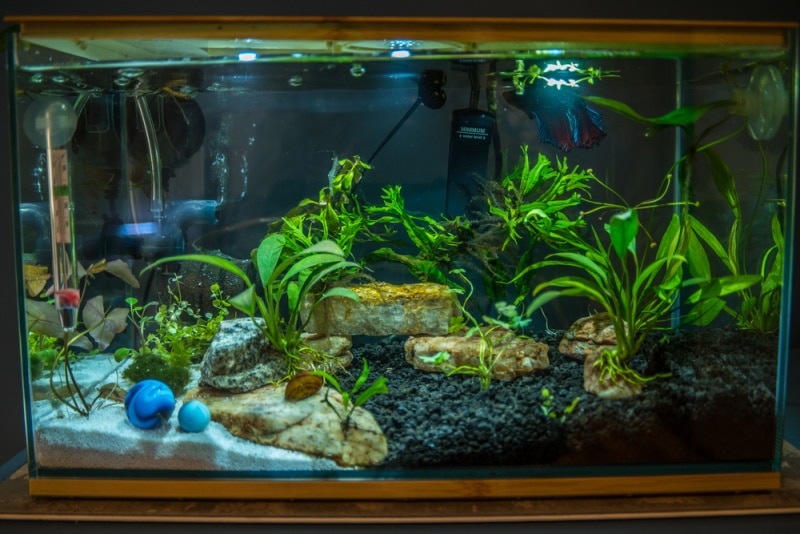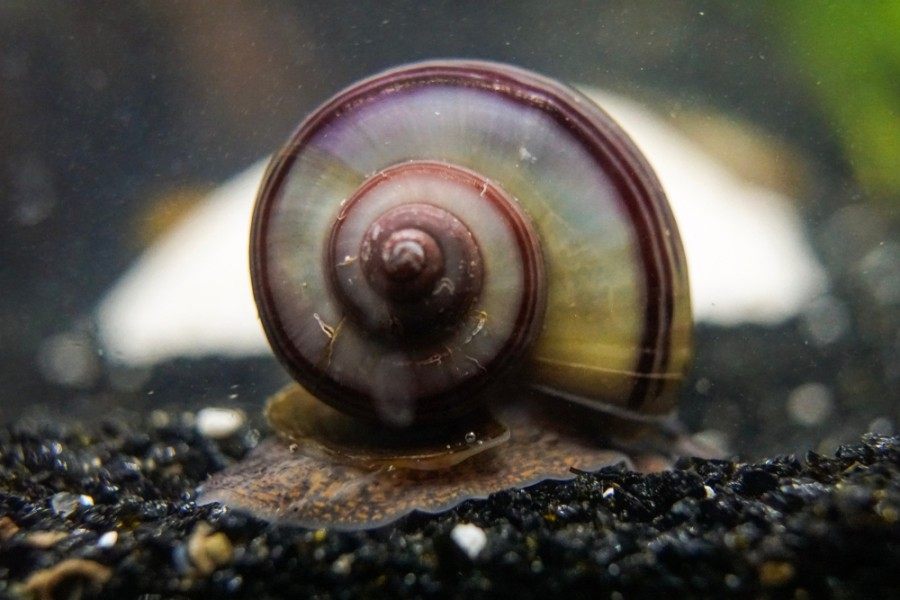Utricularia Graminifolia Aquarium Plant: Planting, Care & Growing Tips

Updated on
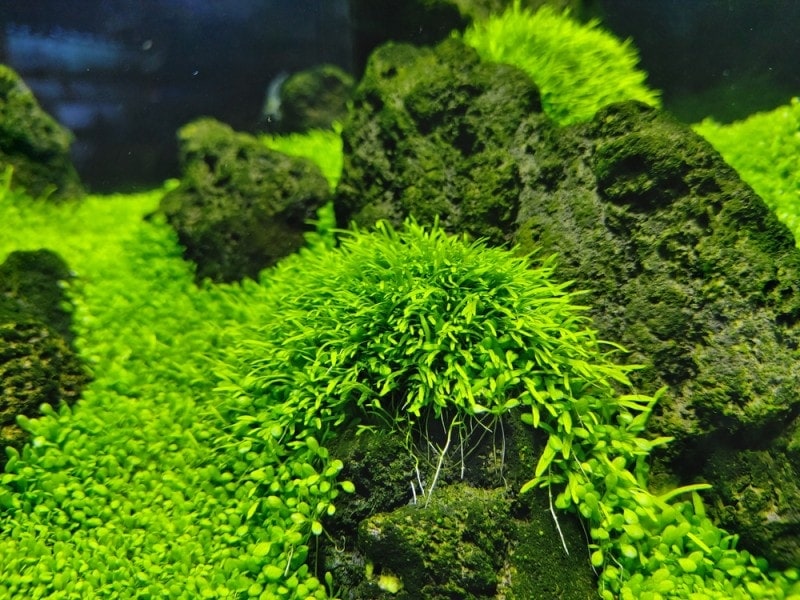
Many people use Utricularia Graminifolia for aquascapes. It should be noted right away that these plants are pretty sensitive and probably won’t do well if you have fish with tendencies to burrow down into substrate or plants. However it does fine with most other fish so there shouldn’t be much of a problem there.
Summary & Requirements
The Utricularia Graminifolia is native to tropical Asian countries such as Vietnam, Sri Lanka, India, China, Burma, and Laos. An interesting thing about this plant is that it likes to be partially submerged underwater with the tops sticking out of the water.
The reason that the tops of these plants stick out of the water is even more interesting. The reason for that is because this plant is part of a rare group of plants that are carnivorous plants. It eats small flies and other insects that fly into the trapping devices that snap shut and are equipped with teeth.
Utricularia Graminifolia and all other meat eating plants are known as bladderwarts, which is because of the bladder they produce. The bladder is the technical term for the pod or trapping device.
Having a bladderwort in aquarium is pretty cool because if you pay close attention, you can actually see these things eating food. A bladderwort aquarium plant has to be one of the most interesting aquatic greens to have in any tank.
Utricularia Graminifolia is also ideal for underwater environments and can survive perfectly fine completely submerged in water, thus making them ideal for aquariums. If they are prompted to do so, or in other words, if there is food under the water, they will also grow trapping devices when submerged.
The pods or trapping devices are quite small, but when submerged they can trap small crustaceans, ciliates, some forms of plankton and phytoplankton, and other small waterborne creatures too.
This plant uses special enzymes that it secrets to digest the animals and turn them into nitrogen and phosphorous in order to grow and reproduce.
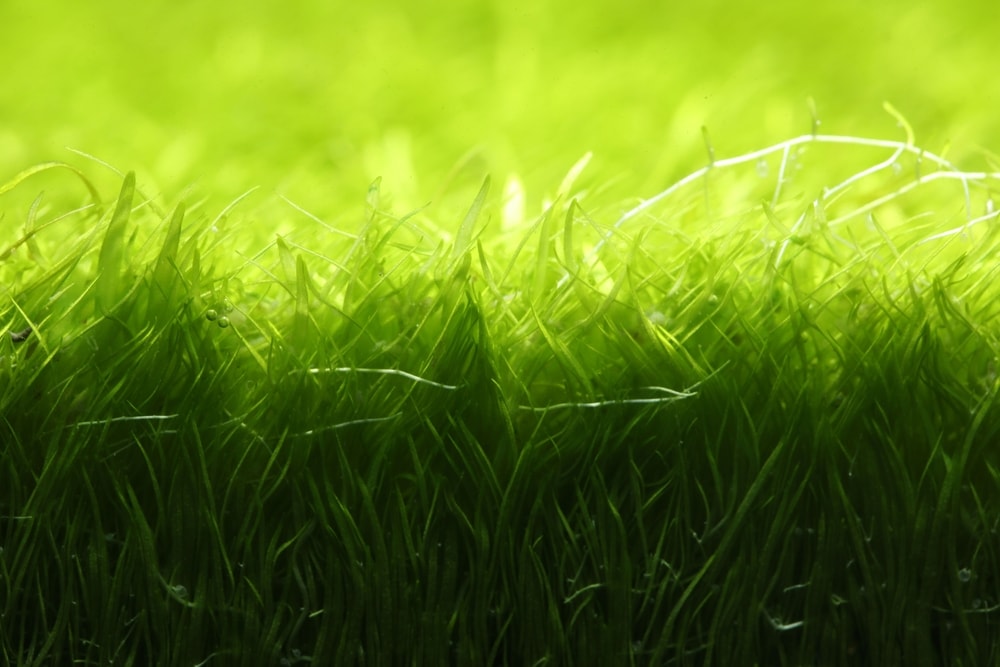
Growth
One thing to note about Utricularia Graminifolia is that it has a relatively moderate growth rate.
However, with that being said, if the Utricularia Graminifolia has good growing conditions, such as high light amounts, nutrient supplements, and even some added CO2, then it is an aquarium plant can spread very quickly.
What is interesting to note is that although we talk about planting this carnivorous plant, the Utricularia Graminifolia does not actually need to be planted, and in the wild, it often grows as a free-floating plant, but it does also have the ability to attach itself to rocks, driftwood, and more.
Keep in mind that the Utricularia Graminifolia, although technically not a carpeting plant, does make for some great carpets. It will grow upwards, but it also grows outwards, and quite quickly at that.
Due to its growth nature, how it grows relatively small and wide, it makes for a good carpeting plant for the foregrounds and midgrounds of tanks. Something we will touch on later is how this plant can be started using a so called dry start method.
Tank Size
In terms of the required tank size for the Utricularia Graminifolia, this somewhat grass like plant , does not need a very large tank.
The reason for this is because it grows outwards more than upwards, so tanks do not have to be very tall. Moreover, if you keep it under control and you make sure that this plant is trimmed regularly, then it can be in very small tanks.
That said, most people would not recommend putting this plant in an aquarium under 10 or even 15 gallons, as this carnivorous plant does spread rapidly, given the right conditions.
pH
Utricularia Graminifolia prefers the water to be fairly high in acidity.
In other words, for this plant to flourish to the fullest of its capabilities, the pH level should be between 5.0 and 6.5.
If need be, you may need to use some pH altering chemicals, or even things like driftwood, in order to bring the water pH down the ideal level.

Hardness
In terms of the water hardness, the Utricularia Graminifolia likes it to be between 7 and 10 KH. for those of you who don’t know, this means that the water needs to be relatively soft.
In order to achieve the proper hardness level, you may need to use some water conditioner. Utricularia Graminifolia will not do well in water that is either too hard or too soft, as it is quite sensitive to this.
Temperature
Utricularia Graminifolia is also a bit sensitive when it comes to the ideal temperature. Now, as long as the temperature is quite steady, then it is not such a big issue.
As you can probably tell, the important part here is that the temperature remains about the same at all times.
However, the Utricularia Graminifolia can tolerate temperatures between 16 and 28 degrees Celsius, or between 61 and 82 degrees Fahrenheit.
Lighting
As mentioned earlier or, when it comes to light, the Utricularia Graminifolia is a bit picky. When first put in a substrate, it should not be exposed to too much light.
Too much light when this plant is first growing may actually damage it. However, as this plant grows in the aquarium, and as it gets bigger, it will like to have more light.
This is a plant that when mature, it does best in moderate to high light conditions. Therefore, it does make for a good fit for any brightly lit aquarium, at least once it has moved out of its infantile stage.
Location
In terms of the location to plant the Utricularia Graminifolia in, this is a very versatile plant.
Now, you can plant the Utricularia Graminifolia in all sorts of places, you can let it float around in the aquarium, or you can even give it a dry start by planting it in a dry location above ground, and then move it into the aquarium once it has started to mature.
That said, because Utricularia Graminifolia forms quite a thick carpet, most people choose to put it in the foreground or the midground, as it does not get very tall.
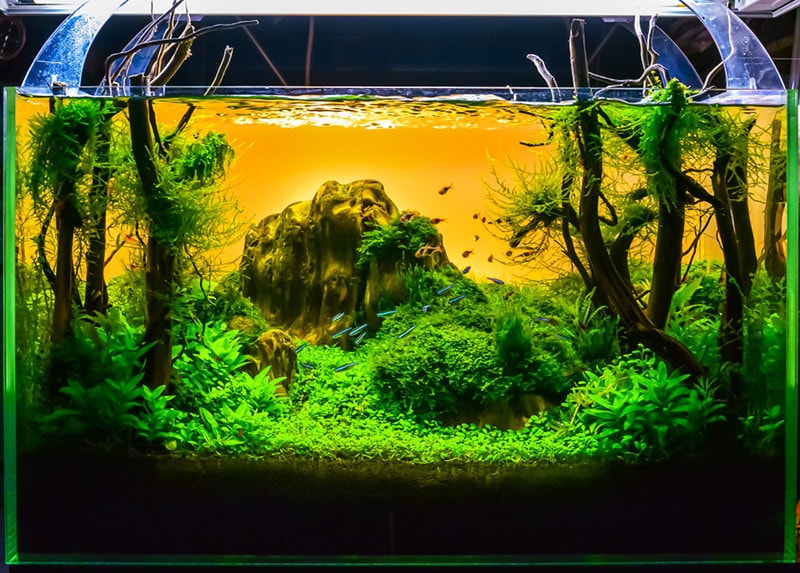
Substrate/Nutrients
Utricularia Graminifolia does not do very well in nutrient poor conditions. Sure, it can survive without the addition of nutrients, but for Utricularia, rich waters are way better than nutrient poor waters.
Adding a bit of aquarium safe fertilizer, supplementing CO2, and using the right substrate can go a long way in making this thing get big and healthy.
The runners of the Utricularia can attach themselves to rocks and driftwood, so you technically don’t need any substrate, but that said if you want to, using soil substrate, sand substrate, and even fine gravel substrate are all good options.
In this sense, this is a good addition to any aquarium because it’s not picky at all. It can be attached to things, rooted in substrate, or free floating too.
Remember that if you are going to use the dry start method, you want to place it in some moist peat to allow it to get bigger, and then once the dry start has been completed, you can then put it in the aquarium.
How To Plant Utricularia Graminifolia
Utricularia Graminifolia is pretty easy to plant. They come from the store attached to coir disks or stone wool. In order to plant the Graminifolia just cut the wool into smaller pieces and plant them about 5 cm from each other, this way they will grow together to form a solid carpet in a few months.
Be sure to keep some of the coir or stone wool on the bottom of the Utricularia Graminifolia when planting, this will weight them down and make it easier for them to get a hold on the aquarium bed.
In the beginning, they should not have much light because it may damage them, but once they have had about 2 months to grow, they will need increased amounts of light to survive.
Once again, what does need to be said here is that Utricularia Graminifolia, in the wild, often grows as a floating plant, not rooted. Therefore, if you choose to do so, you don’t actually have to plant it at all.
Generally speaking, this plant may actually do best when you allow the runners to perform nutrient absorption right from the aquarium, as opposed to pulling them from the substrate.

Propagation and Maintenance
If you want to propagate this plant, you can gently pull apart small bushed by the roots and spread them around the aquarium.
Try not to remove individual offshoots on their own, as they may break or die. It’s best to pull off a little bush of multiple offshoots at once, as this will give it the best chance of survival.
In terms of maintenance, clipping the top about twice per month will help you achieve that carpet effect you are looking for.
Utricularia Graminifolia Aquascape Ideas
If you are looking for a good aquascape idea, remember that Utricularia Graminifolia and shrimp make good combinations.
Shrimp love running around in this stuff and looking for food. At any rate, it’s a good option if you want to make an aquarium with a green carpet lining the bottom.
Does Utricularia Graminifolia Need CO2?
Although Utricularia Graminifolia will benefit if you supplement CO2 into the aquarium, and yes, while it will develop faster, it is not at all necessary for its survival.
Conclusion
There you have it folks, everything you need to know about caring for this really unique meat-eating plant.
Featured image credit: chonlasub woravichan, Shutterstock





